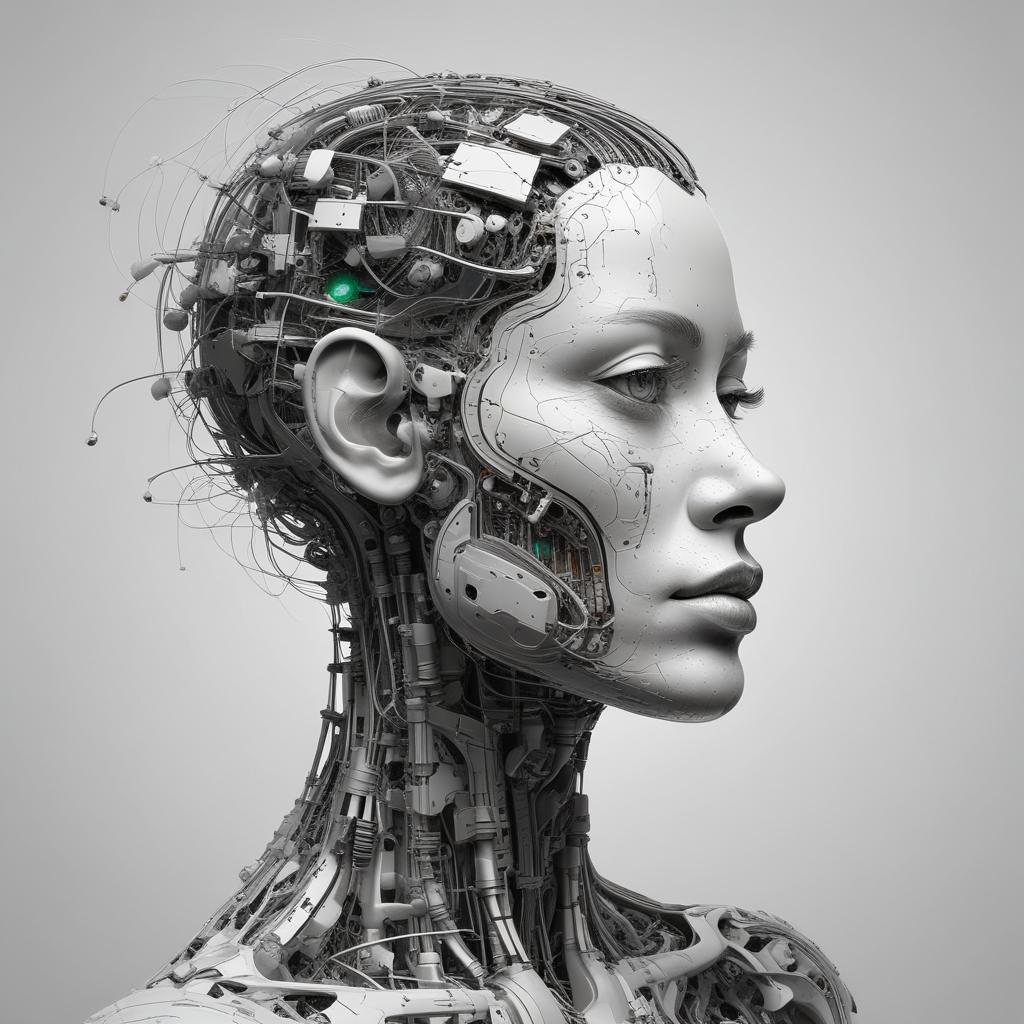The Evolution of Artistic Innovation with AI
The integration of artificial intelligence (AI) into the arts has revolutionized the field, leading to a new era of creative expression and innovation. From painting and sculpture to music and literature, AI's impact is profound, reshaping traditional methodologies and spawning entirely new forms of art. This article explores the key advancements and transformative effects of AI in the art world.

- Automated Art Creation
AI algorithms have enabled the creation of visual art without direct human intervention. Tools like deep neural networks analyze thousands of artistic works to learn and generate new images in various styles. For instance, Google's DeepDream and AI GANs (Generative Adversarial Networks) such as Artbreeder have been popular for generating surreal and hyper-stylized artworks that challenge conventional aesthetic norms.
- Enhanced Creative Collaboration
AI is not just a tool for automating the creation process but also serves as a collaborative partner. Artists can input their ideas, themes, or even rough sketches into AI systems, which then elaborate or suggest modifications that enhance the original concept. This symbiotic relationship can lead to faster development of ideas and the exploration of creative avenues that may not be immediately apparent to human artists alone.
- Personalized Art Experiences
AI has made way for personalized art installations and experiences that adjust and respond to the presence or feedback of viewers. For instance, AI-driven installations might change colors, shapes, or sounds based on the movements, facial expressions, or even the heart rates of its audience, providing a unique experience tailored to each viewer's emotional state and reactions.
- Revolutionizing Music Composition
In the music industry, AI has been used for composing scores, generating entire songs, and even live performances. AI music programs like AIVA (Artificial Intelligence Virtual Artist) and Sony's Flow Machines are pushing the boundaries of how music is composed and understood. They analyze vast amounts of music data to identify patterns and generate compositions in various styles and genres, making it possible to create innovative and unique musical pieces.
- Transformation in Performance Art
Performance artists are integrating AI to create more interactive and immersive experiences. AI-driven robots, holograms, and virtual reality are just a few examples where technology meets performance art, offering new ways for artists to express themselves and engage with their audience. These technologies not only expand the expressive range of performers but also challenge the audience's perception of art and performance.
- Expansion of Literary Arts
In the domain of writing, AI has been employed to write poems, stories, and even novels. Algorithms like OpenAI's GPT-series can generate text based on provided prompts, mimicking styles ranging from Shakespearean poetry to contemporary prose. This capability has opened debates about creativity and authorship, pushing literary boundaries and exploring what it means to be a writer in the digital age.
- Enhancement of Visual Effects in Film
The film industry has also greatly benefited from advancements in AI, particularly in the area of visual effects. AI tools have streamlined the process of creating complex scenes and animations, reducing costs and time investments, and increasing the capability to generate realistic and visually stunning scenes. This has had a particularly significant impact on genres like science fiction and fantasy, where the limits of imagination are constantly being expanded.
- AI in Art Preservation and Restoration
Art preservationists are using AI to analyze and restore aging or damaged artworks. AI systems can predict deterioration patterns and suggest preservation methods, sometimes even restoring images of artworks to their original state by filling in lost colors and textures based on learning from undamaged areas and similar works.
- Democratizing Art
AI has the potential to democratize art production and consumption. With AI tools, aspiring artists can access sophisticated creative tools without the need for expensive equipment or formal training. Consumers can explore and interact with art in more personalized ways, from customizing prints to engaging with AI-generated art through mobile apps and online platforms.
- Pioneering New Art Forms
Finally, AI is leading to the creation of new art forms and practices. Hybrid arts that combine traditional techniques with advanced AI methodologies are emerging, challenging the traditional boundaries and categories of art. As these technologies continue to evolve, they promise to further blur the lines between various art forms, encouraging continuous innovation and exploration in the artistic world.
The integration of AI in art is not just changing how art is made and consumed but also how it is perceived. As artificial intelligence continues to evolve, its impact on the art world is expected to grow, pushing the boundaries of what is possible in artistic expression and innovation. The evolution of artistic innovation with AI is an exciting field, full of potential for unexpected developments and revolutionary changes.


.jpg)






.jpg)



0 Comments